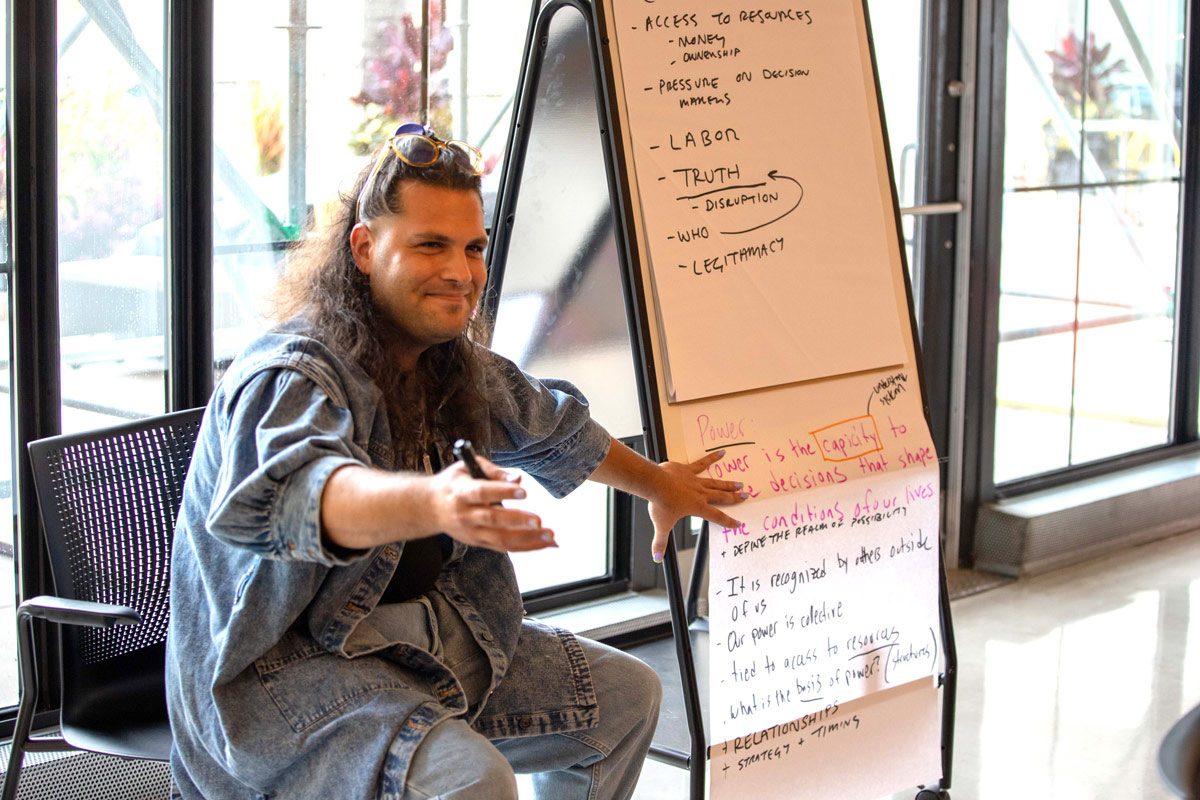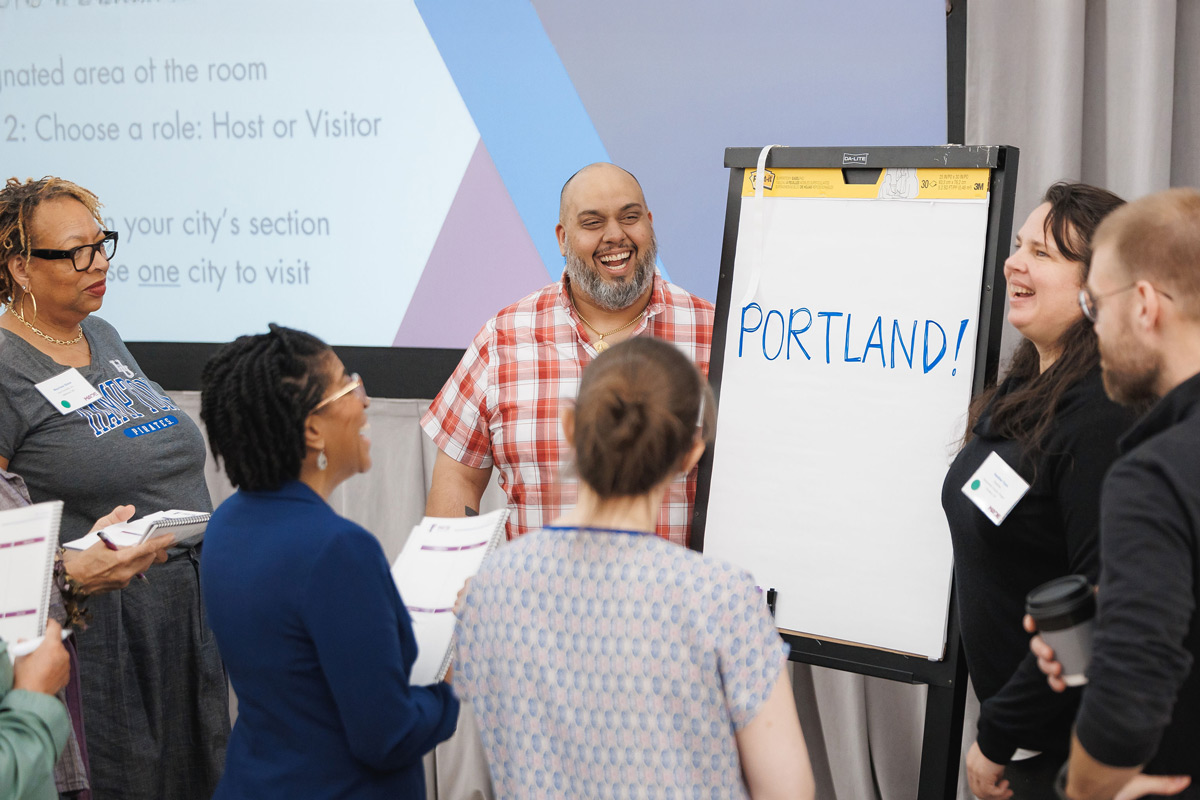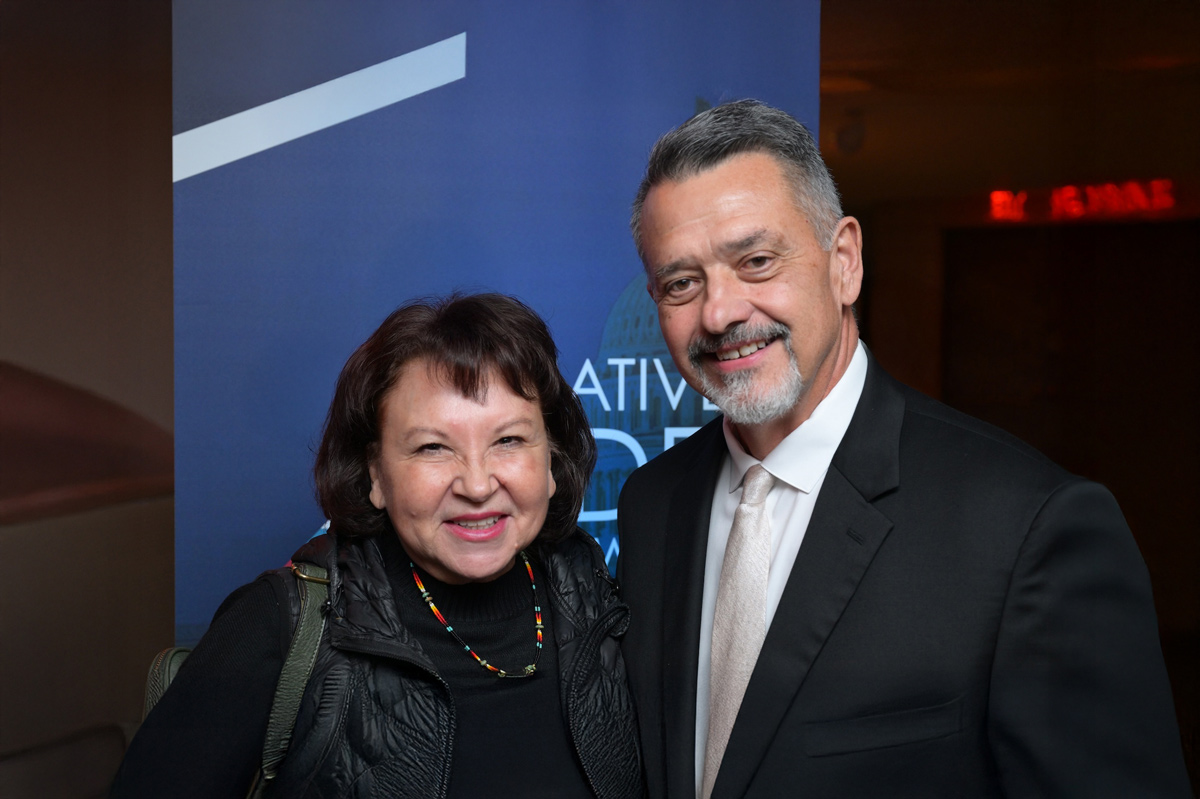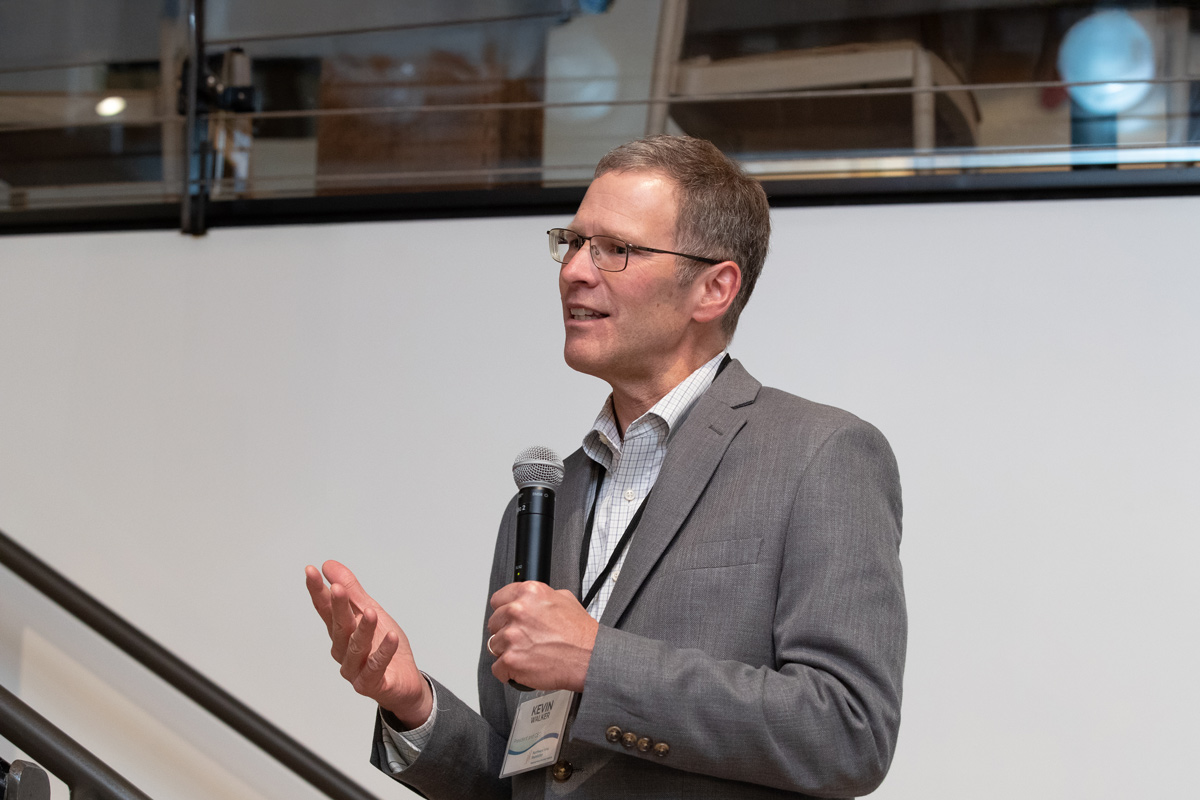“We have to ask ourselves, ‘How well are we taking care of workers? How well are we allowing for people to have basic needs met?’ Confluence and worker centers are asking these important questions; they’re pressing in on these issues.”
Jen Racho
Program Officer, Northwest Area Foundation
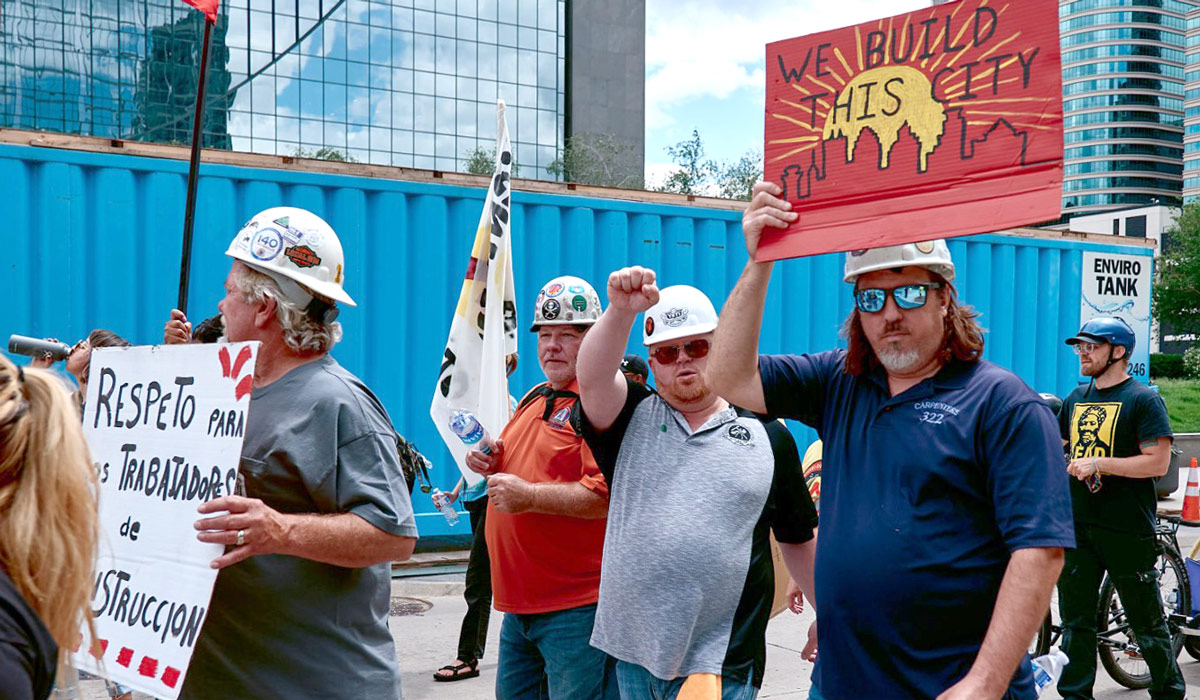
North America Building Trades Unions (NABTU) members march in solidarity with Centro de Trabajadores Unidos en la Lucha’s (CTUL’s) non-union construction members. Photo courtesy of CTUL.
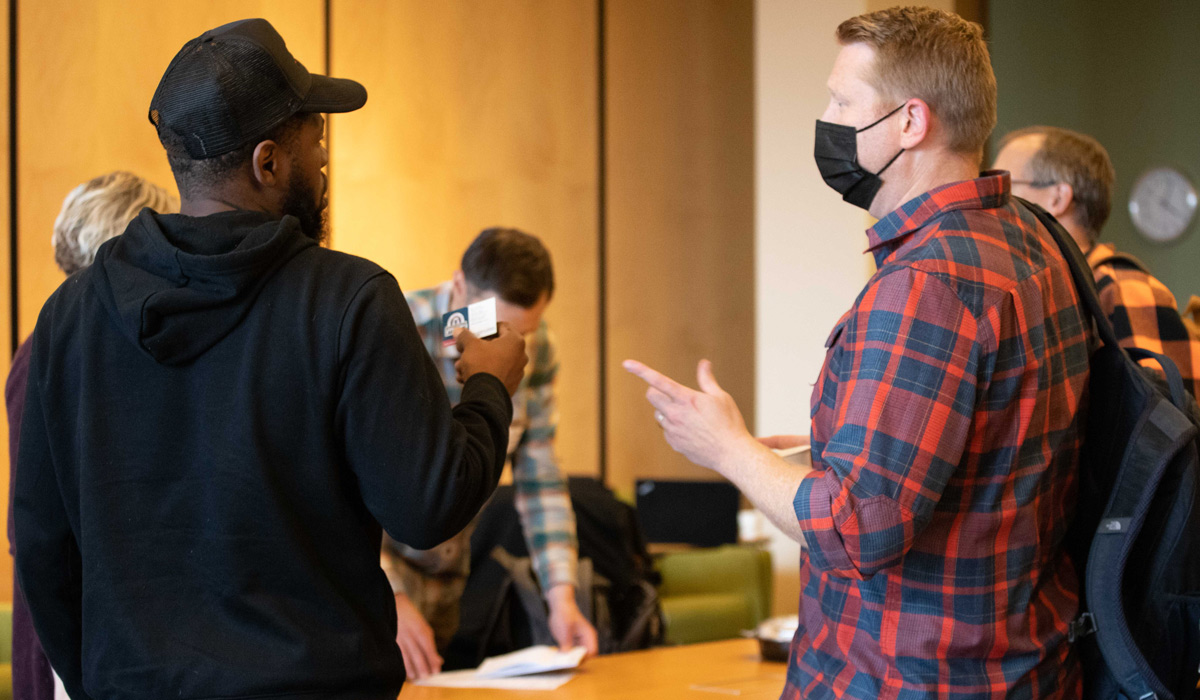
Building connections at the 2022 Confluence stakeholder convening are Confluence grantees Rod Adams of New Justice Project (left), and Burt Johnson of North Central States Regional Council of Carpenters. Photo by Paula Vasquez Alzate, McKnight Foundation.
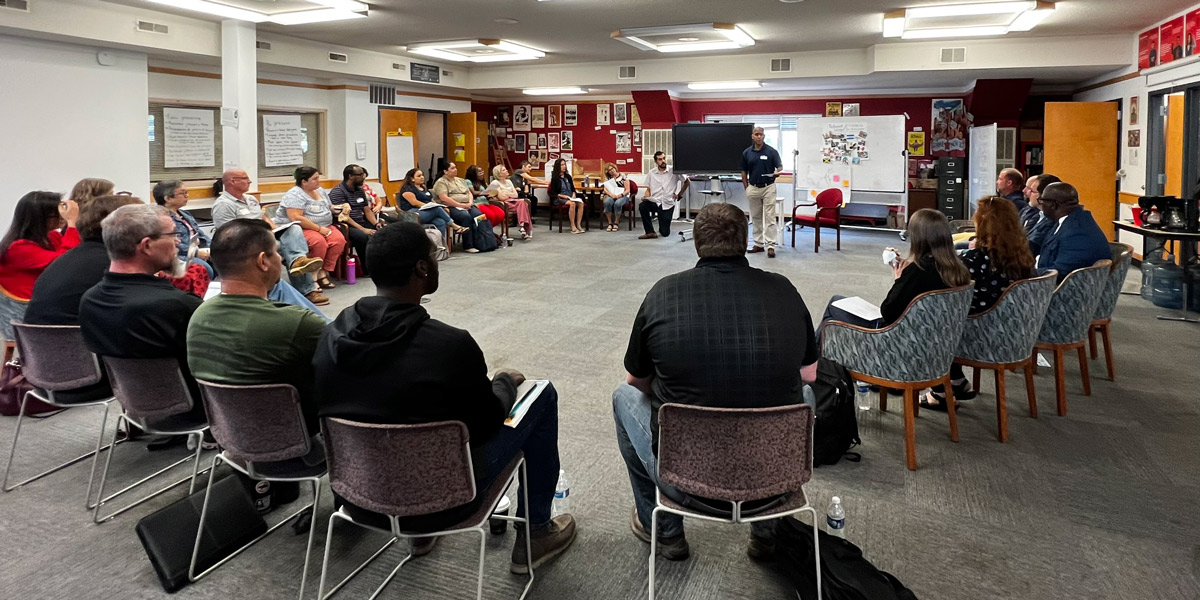
Octavio Chung Bustamante, investigator and marketer, Laborers’ International Union of North America (LIUNA) Minnesota and North Dakota, speaks to union and worker center leaders and city and state agency staff about organizing immigrant workers. Photo courtesy of Workers Confluence Fund.
“There’s the bottom line, shareholder profits. And workers often tend to be numbers on a spreadsheet. You have to change the public narrative and public policy . . . so that there’s more equal footing between the community and workers and companies.”
Casey Hudek
Key Labor Strategist, Workers Confluence Fund
Campaigns Manager, Minneapolis Regional Labor Federation
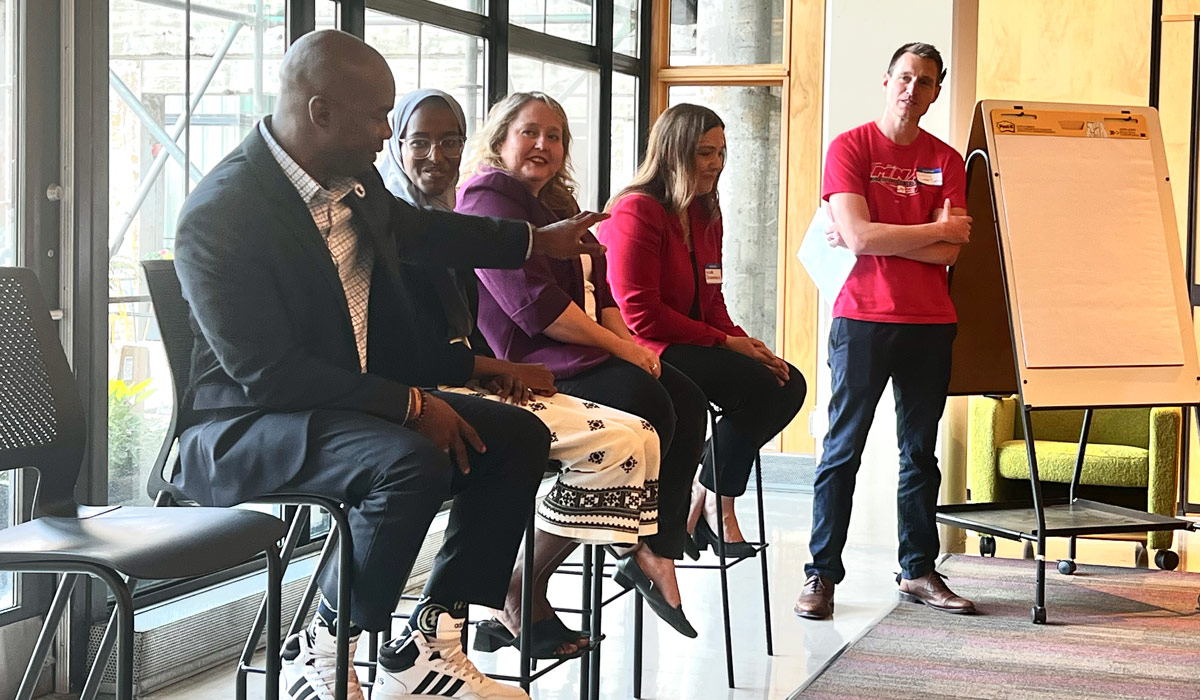
Policymakers at a Confluence event celebrating the 2023 legislative session’s many wins for workers. From left: Rep. Cederick Frazier, D–MN District 43A; Senator Zaynab Mohamed of Minnesota; Rep. Emma Greenman, D–MN District 63B; Commissioner Nicole Blissenbach, MN Department of Labor and Industry; and Casey Hudek, key labor strategist, Workers Confluence Fund. Photo courtesy of Workers Confluence Fund.
Photo top: Sheli Stein of Confluence grantee Restaurant Opportunities Center of Minnesota (ROC-MN) leads a workshop at Confluence’s 2022 stakeholder convening. Photo by Paula Vasquez Alzate, McKnight Foundation.

